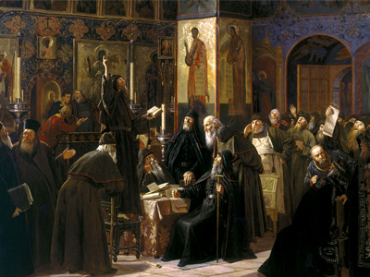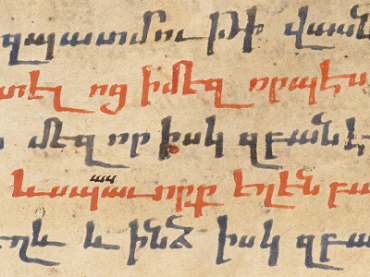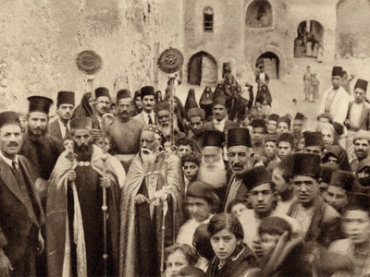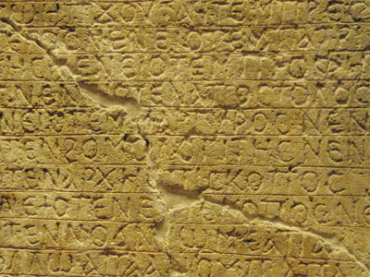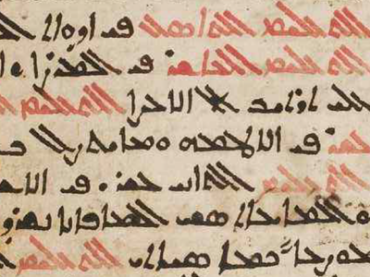Syriac and Eastern Christianity
Second non-official consultation on dialogue within the Syriac tradition. Pro Oriente 1996
Translated by Marcel Taraqji
ISBN: 978-1-60724-173-7
This volume is a translation into Arabic of the papers and discussions published as part of the Pro-Oriente ecumenical consultation between members of Roman Catholic, Chaldean Catholic, Syro-Malankar, Syrian Orthodox, Maronite, and Assyrian Orthodox Churches, originally published in Vienna in 1994. Many of the papers in this volume are commentaries by members of the various churches represented at the consultation on the joint declaration issued by Pope John Paul II and Patriarch Denha IV. A number of other papers seeks to address the question of whether the Council of Ephesus unites or divides.
$203.00
The Province, Study and Advantage of Ecclesiatical History
Lectures on the History of the Eastern Church
Series: Analecta Gorgiana 163
ISBN: 978-1-60724-178-2
Extracted from Arthur Penrhyn Stanley’s Lectures on the History of the Eastern Church, this introduction to ecclesiastical history is a tribute to the insight of a former professor of ecclesiastical history at Oxford. Stanley’s introduction covers three main areas: the province of ecclesiastical history, the study of ecclesiastical history, and the advantages of such study.
$42.00
The Eastern Church
Lectures on the History of the Eastern Church
Series: Analecta Gorgiana 164
ISBN: 978-1-60724-179-9
Extracted from Arthur Penrhyn Stanley’s Lectures on the History of the Eastern Church, this initial essay lays out his general perceptions of the Eastern Church. He considers the divisions of the church, the historical epochs into which it falls, and the general characteristics and the advantage of studying them.
$41.00
The Council of Nicea
Lectures on the History of the Eastern Church
Series: Analecta Gorgiana 165
ISBN: 978-1-60724-180-5
Extracted from Arthur Penrhyn Stanley’s Lectures on the History of the Eastern Church, this set of lectures focuses on the Council of Nicea. Divided into four separate lectures, it begins with a detailed general overview, the contents and participants of the council, a consideration of its opening and the final results of its closing.
$54.00
Constantine and Athanasius
Lectures on the History of the Eastern Church
Series: Analecta Gorgiana 166
ISBN: 978-1-60724-181-2
Extracted from Arthur Penrhyn Stanley’s Lectures on the History of the Eastern Church, this set of lectures examines two of the most famous participants of the Council of Nicea, the Emperor Constantine and Saint Athanasius. Together these two figures largely define the Council of Nicea, and their portraits are vividly portrayed here by an eminent church historian.
$44.00
The Russian Church
Lectures on the History of the Eastern Church
Series: Analecta Gorgiana 167
ISBN: 978-1-60724-182-9
Extracted from Arthur Penrhyn Stanley’s Lectures on the History of the Eastern Church, this set of lectures covers the Russian Church. Stanley begins with the conversion of Russia and moves through the Middle Ages and concentrates on Patriarch Nicon and the reformations in the church under Peter the Great.
$56.00
The Saint James Liturgy
Antient Liturgies
Series: Analecta Gorgiana 169
ISBN: 978-1-60724-184-3
C. E. Hammond's Antient Liturgies provided a valuable resource at an early stage in comparative liturgical studies. Free of extensive critical apparatus, Antient Liturgies presents a collection of historic forms of worship from the Western, Eastern, and Oriental Churches. This extract from the book focuses on the St. James Liturgy, both the Greek and Syriac renditions. Representing the liturgy of the Patriarchate of Antioch, this liturgy is rendered in Greek and Latin. As an analytical introduction this early study continues to provide a broad overview of early Christian worship made available in an accessible and convenient format for students and scholars.
$45.00
The Liturgy of Constantinople
Antient Liturgies
Series: Analecta Gorgiana 170
ISBN: 978-1-60724-185-0
C. E. Hammond's Antient Liturgies provided a valuable resource at an early stage in comparative liturgical studies. Free of extensive critical apparatus, Antient Liturgies presents a collection of historic forms of worship from the Western, Eastern, and Oriental Churches. This extract from the book focuses on the Liturgy of Constantinople. As Hammond explains, this liturgy contains elements of the St. Basil, St. Chrysostom, and Presanctified liturgies presented in Greek. As an analytical introduction this early study continues to provide a broad overview of early Christian worship made available in an accessible and convenient format for students and scholars.
$43.00
The Armenian Liturgy
Antient Liturgies
Series: Analecta Gorgiana 171
ISBN: 978-1-60724-186-7
C. E. Hammond's Antient Liturgies provided a valuable resource at an early stage in comparative liturgical studies. Free of extensive critical apparatus, Antient Liturgies presents a collection of historic forms of worship from the Western, Eastern, and Oriental Churches. This extract from the book focuses on the Armenian liturgy. With a beginning in the early fourth century, in connection with the Exarchate of Caesarea, this liturgy is presented in English. As an analytical introduction this early study continues to provide a broad overview of early Christian worship made available in an accessible and convenient format for students and scholars.
$41.00
The Coptic Liturgy
Antient Liturgies
Series: Analecta Gorgiana 172
ISBN: 978-1-60724-187-4
C. E. Hammond's Antient Liturgies provided a valuable resource at an early stage in comparative liturgical studies. Free of extensive critical apparatus, Antient Liturgies presents a collection of historic forms of worship from the Western, Eastern, and Oriental Churches. This extract from the book focuses on the Coptic liturgy. The origin of the liturgy goes back to the St. Cyril and St. Basil liturgies. Here the liturgy is presented in Latin. As an analytical introduction this early study continues to provide a broad overview of early Christian worship made available in an accessible and convenient format for students and scholars.
$41.00
The Ethiopic Liturgy
Antient Liturgies
Series: Analecta Gorgiana 173
ISBN: 978-1-60724-188-1
C. E. Hammond's Antient Liturgies provided a valuable resource at an early stage in comparative liturgical studies. Free of extensive critical apparatus, Antient Liturgies presents a collection of historic forms of worship from the Western, Eastern, and Oriental Churches. This extract from the book focuses on the Ethiopic liturgy, here the liturgy is presented in Latin. As an analytical introduction this early study continues to provide a broad overview of early Christian worship made available in an accessible and convenient format for students and scholars.
$39.00
On the Song of Songs II
Series: Monastic Studies Series 13
ISBN: 978-1-60724-190-4
A profound mystic, Bernard sought, above all and in all, to be with God and to bring all persons to the experience of God. His Sermons on the Song of Songs are among the most famous and most beautiful examples of medieval scriptural exegesis. In them the modern reader can catch a glimpse of the genius which an entire generation found irresistible.
$152.00
Song of Songs I
By Bernard of Clairvaux; Translated by Kilian Walsh OCSO; Introduction by M. Corneille Halflants OCSO
Series: Monastic Studies Series 12
ISBN: 978-1-60724-191-1
A profound mystic, Bernard sought, above all and in all, to be with God and to bring all persons to the experience of God. His Sermons on the Song of Songs are among the most famous and most beautiful examples of medieval scriptural exegesis. In them the modern reader can catch a glimpse of the genius which an entire generation found irresistible.
$130.00
The Enigma of Faith
By William of Saint Thierry; Translation and Introduction by John D. Anderson
Series: Monastic Studies Series 14
ISBN: 978-1-60724-192-8
William of Saint Thierry left all things in his search for God. He left his home in Liège (modern Belgium) to study in France. He left the schools to enter Benedictine monastic life at Rheims. And late in life he left the Benedictines to enter the most austere, recently founded Cistercian abbey of Signy in the Ardennes forest. What he did not leave was his keen intellect and his vehement love of Truth.
$150.00
Spiritual Friendship
Series: Monastic Studies Series 15
ISBN: 978-1-60724-193-5
Aelred of Rievaulx was born in the borderlands of Northumbria was raised at the royal court of Scotland. While traveling in King David’s service in 1134, the restless young man visited Rievaulx, a new foundation of the Cistercian monks in Yorkshire. The next day he returned to become a monk, and thirteen years later became abbot. In this second volume on spiritual friendship, written near the end of his life, Aelred completes his early treatise and shares his mature experience of the love of his companions and the love of God.
$152.00
Exposition on the Song of Songs
By William of Saint Thierry; Translated by Mother Columba Hart OSB; Introduction by J.-M. Déchanet OSB
Series: Monastic Studies Series 16
ISBN: 978-1-60724-194-2
In the twelfth and early thirteenth centuries, The Song of Songs was a favorite book of Cistercian monks. Bernard of Clairvaux, Gilbert of Hoyland, and John of Ford, as well as William of Saint Thierry, read it as a dialogue between Christ the Bridegroom and the human soul, the Bride. William of Saint Thierry began composing his commentary soon after entering the Cistercian abbey of Signy in 1135. Having left behind a busy life as a Benedictine abbot and author of theological treatises, he turned to writing meditations on Scripture as the means of listening to the voice of the Beloved.
$138.00
The Life and Death of Saint Malachy the Irishman
By Bernard of Clairvaux; Translated and Annotated by Robert T. Meyer
Series: Monastic Studies Series 17
ISBN: 978-1-60724-195-9
This book tells the life of a saint by a saint. Malachy O'Morgair spent his life and considerable energies exhorting, wheedling, badgering, and praying his countrymen back to christian faith and practice. Bernard holds him up in this Life, eulogy, and hymn as a model to bishops.
$129.00
Sermons on the Christian Year
Series: Monastic Studies Series 18
ISBN: 978-1-60724-196-6
A scholar turned monk, Isaac combined the increasingly technical vocabulary of the cathedral schools with the spiritual tradition of the monastery. Dialectic is here combined with meditative reflection.
$149.00
The Steps of Humility and Pride
By Bernard of Clairvaux; Introduction by M. Basil Pennington OCSO; Translated by M. Ambrose Conway OCSO
Series: Monastic Studies Series 19
ISBN: 978-1-60724-197-3
The son of Burgundian nobility, Bernard admitted after years of struggle that humility remained for him the most elusive of the virtues. Yet the uncompromising vehemence of his love for God made him strive for what monastic tradition taught is indispensable to anyone hoping to share God's perfect love.
$114.00
On Loving God
By Bernard of Clairvaux; Analytical Commentary by Emero Stiegman
Series: Monastic Studies Series 20
ISBN: 978-1-60724-198-0
Perhaps Bernard's most delightful tract, On Loving God posits that everything good in human persons is an expression of God's love and by love the person may participate in the being of the triune God. In a new analytic commentary, Stiegman examines Bernard's language, logic, and theology, demonstrating the vital importance of reading medieval authors on their own terms, without superimposing categories developed by later generations.
$168.00
Sermons on the Song of Songs, I
By Gilbert of Hoyland; Translation and Introduction by Lawrence C. Braceland SJ
Series: Monastic Studies Series 21
ISBN: 978-1-60724-199-7
Taking up Saint Bernard's unfinished sermon-commentary, Gilbert ruminates on verse 3:1-5:10 in forty-eight sermons, leaving the task to be finished by John of Ford.
$135.00
The Mirror of Charity
Series: Monastic Studies Series 26
ISBN: 978-1-60724-200-0
Aelred of Rievaulx possessed a personal charm which drew friends and disciples naturally to him. His own experience of human weakness in a worldly life at the court of King David of Scotland made him sensitive to the doctrine of charity which he found among Cistercian monks. The Mirror of Charity gives us a solid theology of the Cistercian life. Because the divine nature is love, as the Bible tells us, directing our love to God-love conforms us to the image of God that has been lost through sin. All love, to Aelred, is a participation in God-love that leads us to union.
$187.00
Homilies in Praise of the Blessed Virgin Mary
By Bernard of Clairvaux; Translated by Marie-Bernard Saïd; Introduction by M. Chrysogonus Waddell OCSO
Series: Monastic Studies Series 23
ISBN: 978-1-60724-201-7
The young abbot meditates on the singular role of the Virgin Mother of Christ 'to satisfy [his] own devotion', and in doing so bequeathes his own love of Mary and of Scripture to his Order and to the Church.
$142.00
Eight Homilies on the Praises of Blessed Mary
Series: Monastic Studies Series 24
ISBN: 978-1-60724-202-4
Amadeus became a monk of Clairvaux in 1125, just about the time its abbot, Bernard, began to be noticed by the Church at large. After twenty years in the cloister, Amadeus became bishop of the troubled diocese of Lausanne. Reform and renewal did not come easily. Amid political skullduggery, as well as the demands of pastoral and administrative duties, Bishop Amadeus managed to write–perhaps to preach–these eight homilies in praise of Mary. Formed as a monk under the charismatic influence of Saint Bernard, Amadeus retained a distinctive piety which finds eloquent expression in this series of sermons, almost all that survives from his pen.
$116.00
In Praise of the New Knighthood
A Treatise on the Knights Templar and the Holy Places of Jerusalem
Series: Monastic Studies Series 25
ISBN: 978-1-60724-203-1
The monk and the knight—the two quintessentially medieval European heroes—were combined in the Knights Templar, men who took the monastic vows and defended the holy places and pilgrims. With characteristic eloquence, Bernard of Clairvaux voices the cleric's view of the knights, warfare, and the conquest of the Holy Land in five chapters on the knight's vocation. Then, in another eight chapters the abbot who never visited the Holy Land provides a spiritual tour of the pilgrimage sites guarded by this 'new kind of knighthood.'
$143.00
Filter by
Filter by price
Filter by manufacturer


